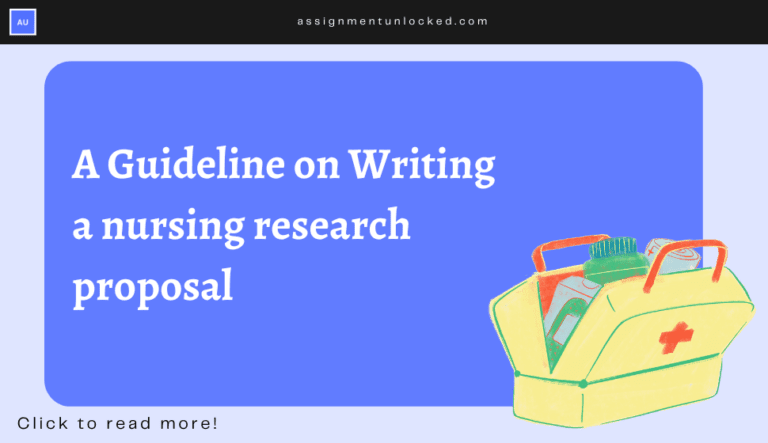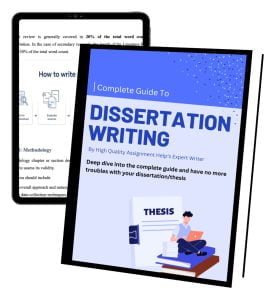Writing a nursing research proposal is essential in conducting meaningful research within the nursing field. Whether a student or a seasoned researcher, a well-crafted research proposal writing service you outline your study’s objectives, methods, and expected outcomes. This guideline provides a step-by-step approach to help you create a comprehensive nursing research proposal.
Introduction
A clear, well-thought-out proposal is the foundation for the research itself, making it the most crucial stage of the research-conducting process.Creating a study proposal would have the dual purposes of applying for grants and getting clearance from various bodies, such as the ethics committee. However, few standards apply to creating a high-calibre research proposal.
What is a Nursing Research Proposal?
A nursing research proposal is a document that outlines the plan for a research study in the field of nursing. It explains the research problem, objectives, methodology, expected outcomes, and the significance of the study. A well-crafted proposal demonstrates the researcher’s understanding of the topic, justifies the need for the study, and outlines the methods to gather and analyze data.
Purpose of a Nursing Research Proposal
The purpose of a nursing research proposal is twofold. Firstly, it allows researchers to gain approval and support for their proposed study from relevant stakeholders, such as academic institutions, research ethics committees, or funding agencies. Secondly, it provides a clear structure for researchers to follow during the research process, ensuring that all necessary components are considered and implemented.
BASIC REQUIREMENTS OF A RESEARCH PROPOSAL
In addition to outlining the question that the research will address, proving its significance, and outlining the ramifications of the response, a proposal must also demonstrate how your work fits into what is currently known about the subject and what new paradigm it will bring to the body of literature.The proposal must persuade the evaluation committee of the research design’s plausibility, attainability, applicability, and reproducibility (repeatability).
RESEARCH PROPOSAL CONTENTS
The institution or the assessment committee often provides a research proposal’s format and content, depending on their specifications.
Typically, a cover page should include the following:
- The proposal’s name.
- Name, position, and organization of the lead investigator and co-investigators.
- Institutional affiliation, including the investigators’ degrees and the name of the institution where the study will be conducted, as well as contact information such as phone numbers and email addresses and spaces for the investigators’ signatures.
The main contents of the proposal may be presented under the following headings:
(i) introduction,
(ii) review of literature,
(iii) aims and objectives,
(iv) research design and methods,
(v) ethical considerations,
(vi) budget,
(vii) appendices
(viii) citations.
Introduction
‘Need for research’ or ‘abstract’ are other terms that may be used to describe it. An introduction briefly summarises an idea; it establishes the scene and contextualizes the investigation. The introduction should be written to pique the reader’s curiosity about the subject and suggestions. The reader should be able to tell what you intend to accomplish, why the research is necessary, and how passionate you are about the subject.
The following are some queries that can be used to gauge the importance of the study:
(i) Who is interested in the field of inquiry?
(ii) What information do we already have on the subject?
What needs to be sufficiently addressed in prior research and practice?
(iv) How will this research contribute to the field’s knowledge, policy, and practice?
Specific evaluation panels expounded on the last two questions under a separate topic of “background and significance.” The research design’s underlying hypothesis should be included in the introduction.
Targets and goals
What the researcher hopes to accomplish with the research is broadly indicated by the research objective (or goal or aim). The study’s purpose could be to test the hypothesis. Primary and secondary objectives are often used to classify goals related to the conditions or resources utilized to achieve them.
Research methodology and design
The reader will be persuaded that the methodology/sources chosen are appropriate for the particular issue and that the overall study design and analysis techniques will effectively handle the research challenge. It must be connected to the precise objectives of your research.
The research methods and sources must be covered in this area, with explicit references to any websites, databases, critical texts, or writers who will be crucial to the project.
These are some of the elements that make up this section:
Sample and population
Sample refers to a subset of the population that satisfies the inclusion criteria for enrollment into the study. In contrast, population refers to all elements (individuals, things, or substances) that meet specified standards for inclusion in a particular universe. It is essential to describe the inclusion and exclusion requirements. The article “Sample size calculation: Basic principles”, published in this issue of IJA, covers the specifics of sample size.
data gathering
The researcher is expected to thoroughly explain the methodology used for data gathering, including the amount of time needed for the research.The validity of the approach should be evaluated, and it should be made sure that the participant’s life is not in danger while trying to get the desired findings. To minimize gaps in the research because of incomplete data collection, the author should be aware of all potential obstacles and pitfalls and explain plans to overcome them.
Consistency
Consistency examines whether the results would hold if the investigation were repeated with the same subjects and in a comparable setting. This can be accomplished by using approved methods and scales that are generally accepted.
data evaluation
This section discusses data reduction, reconstruction, analysis, and sample size determination. The researcher must describe the procedures used to code and organize the data they collected. The data will be subjected to several tests to determine its robustness, and its relevance must be explicit.
Budget
When creating a research budget, the researcher should estimate the costs of each component of the study and then include a contingency fund to cover unforeseen disasters, delays, and growing costs. Every line item in the budget needs to be supported.
Appendices
Documents that back up the plan and application are included in the annexes. The appendices will be unique to each proposal, but documentation like informed consent forms, supporting records, questionnaires, measurement tools, and patient information about the study in everyday language is needed.
Citations
You must cite the sources you used to create your proposal, just like you would with any academic research article. Although “references” and “bibliography” are two distinct concepts, they are frequently used interchangeably. It refers to every source mentioned in the research proposal.
Conclusion
In conclusion, meticulous planning, organization, and attention to detail are necessary while drafting a nursing research proposal. By adhering to this rule, you can develop a comprehensive and persuasive statement that conveys your research’s goals, methodologies, and anticipated results. You can also take help from research proposal writing service.
However, writing a research proposal can be a daunting task, especially if you are new to the field or have limited experience. You can choose research proposal help from Assignment Unlocked our nursing research proposal writing guidelines and assignment help services are designed to provide you with the necessary support and assistance to ensure that your proposal is of the highest quality. By availing of our services, you can improve your understanding of research methods, enhance your writing skills, and save time. Our team of experts is dedicated to providing you with high-quality and timely solutions, ensuring that you achieve the best grades possible.






